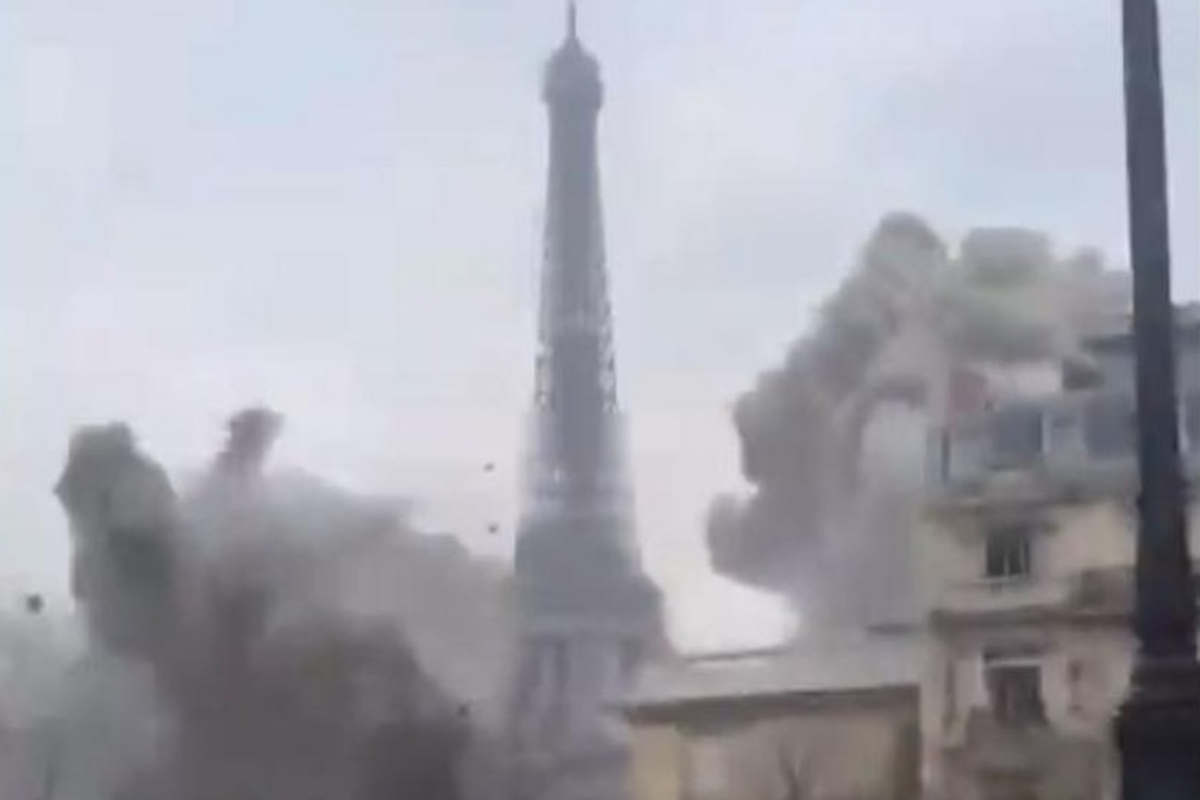Disinformation is a weapon of mass destruction. Relayed indiscriminately by the press and social media, it allows to justify unspeakable acts and to manipulate the opinion.
Paris bombed! The images broadcast by BFMTV this Saturday, March 12, 2022, are there, before our eyes, terrible. The crash of the bombs, the cries of the children, the destroyed Eiffel Tower: everything is there. And everything is false, fortunately. The author of this tasteless montage? The Ukrainian Parliament, which broadcast these shocking images to appeal to Europeans about its own fate. President Zelensky addresses this direct message to the West: “If we fall, you fall !”
The Fake News Industry
Information is a major military issue. Its corollary, false information, lies, disinformation, manipulation and intoxication are part of psychological warfare. The one that takes the public opinion as a witness. It is necessary to mark the spirits with information that is always stronger and more destructive than bombs. The Chinese strategist Tsun Tse affirmed, five centuries before our era, that “the height of success consisted in winning the war without making it”.
The propaganda conveyed by Fake News became virtually industrialized in the 20ᵉ and 21ᵉ centuries with the advent of mass media. With radio, TV, the internet and now the smartphone, news, true or false, travels around the planet in real time. Fear and emotion cloud judgment. They arouse either disgust and revolt, or esteem and empathy. They inevitably lead to irrational feelings.
From Timisoara to Ukraine
Examples abound. Older people remember the mass grave case in Timișoara, Romania in 1989.
More recently, there was the famous case of the incubators in Kuwait to justify the entry into the war of the United States and NATO against Saddam Hussein’s Iraq.
A few years later, Colin Powell, then US Secretary of State, made it appear that the Iraqi dictator had weapons of mass destruction to justify the second Iraq war. He even showed them to the cameras.
There was also the war in the former Yugoslavia at the end of the 20ᵉ century, which according to two journalists from Le Monde Diplomatique, helped propagate “The biggest fib of the end of the 20ᵉ century.”
The wars of the 21ᵉ century do not escape this phenomenon of lies. The bigger they are, the more we believe them. Russia and Ukraine demonstrate this every day. On both sides, the heavy artillery of lies and mystification is brought out without it always being easy to distinguish what is true and what is false. Even the images are sometimes misleading. When the television shows a maternity hospital in Mariupol devastated by a Russian attack, Moscow claims that there was no one in the building and that the young pregnant and injured woman posing for the cameras is a well-known influencer. Her name is Marianna Podgurskaya. Hard to believe, of course.
As for the bombs that have been raining down on Ukraine for the past two weeks, the dead and wounded, the people fleeing the devastated cities, it is difficult to deny them.
The difficult fact-checking
Traditional media as well as social networks feed on these often unverifiable news. By doing so, they take the side of one camp against the other and participate, in a way, in the war. Their responsibility is therefore very heavy. Putin’s Russia has understood this. A law was passed at the beginning of the invasion of Ukraine which punishes up to 15 years in prison anyone who spreads false news. It remains to define false news. Talking about war or invasion is, according to Moscow, fake news. The Russian media are therefore gagged.
Verification and cross-checking of information is at the heart of the journalist’s job, who must himself get information from contradictory sources in order to give his readers reliable information.
Because the world is not Manichean, as in American movies, with Good on one side and Evil on the other as we would like to believe. War is not cinema. There is never a happy ending.
Souvenez-vous.
pic.twitter.com/ChmYUKoNaG— Pierre Gentillet (@Pierre_GTIL) March 11, 2022
Guerre en Ukraine: le Parlement ukrainien diffuse une vidéo d'un bombardement factice de Paris pour interpeller les Européens pic.twitter.com/SCscpbi6Rg
— BFMTV (@BFMTV) March 12, 2022

